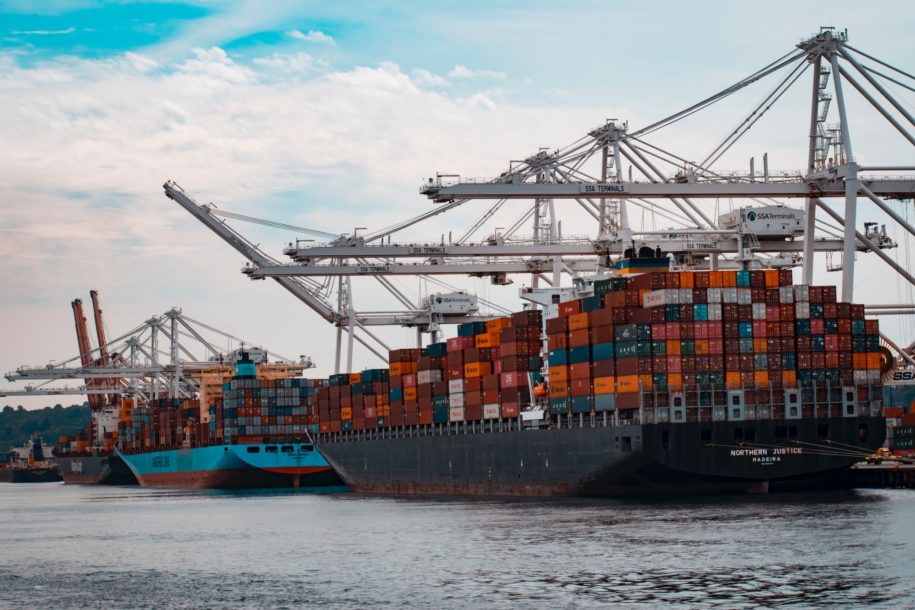
To prioritize the development of key seaports and seaport clusters
Deputy Minister of Transport Nguyen Nhat said that in the upcoming seaport operation, priority should be given to developing key seaports and port clusters.
Speaking at the workshop on master plan development of Vietnam’s seaport system in the period of 2021-2030, with a vision to 2050 by the Vietnam Maritime Administration (Ministry of Transport) held in Hai Phong on the afternoon of December 30 Deputy Minister of Transport Nguyen Nhat said that in the upcoming seaport operation, priority should be given to developing key seaports and port clusters.
According to Deputy Minister Nguyen Nhat, in recent years, Vietnam’s seaport system has made a great progress in both quality and quantity, basically meeting the development objectives under the approved plan, creating a driving force for development. coastal economic, industrial – urban zones; ensure good import and export through sea and sea transport between regions nationwide, meet requirements of socio-economic development and international economic integration, and ensure security. – naitional defense.
“The master plan on development of Vietnam’s seaport system has gone through 20 years of implementation. In the period of 2000s, the cargo system through the seaports of our country only reached about 82 million tons. However, by 2019, this number has increased to 654 million tons and it is predicted that by the end of 2020, it may increase to 670 million tons. This is a strong and outstanding step forward of the maritime sector “, emphasized Deputy Minister Nguyen Nhat.
According to Deputy Minister Nguyen Nhat, due to the needs of socio-economic development, especially the need for business development, increasingly requires the development of marine infrastructure.
Besides, the demand for goods import and export is on the rise. In addition, to meet the needs of multinational transport … leads to the requirement of the scale of the seaport system to be expanded, better planning … to be able to receive ships. international stature entering Vietnam.
The leader of the Ministry of Transport said that in the past, Vietnam could not plan the land area behind seaports. This leads to the fact that after the port is built, there is no logistics system, no place to store and pack.
Besides, Vietnam also has no seaport that can guarantee international scale. Seaports are small while performing many functions, leading to fragmentation and inability to invest in infrastructure.
For the process of implementing seaport planning in Vietnam, the Ministry of Transport said that there are still some shortcomings such as: inconsistency between the seaport planning with local construction planning and other other industries.
Next is that compared to the time of planning construction, so far the transport infrastructure of the 5 sectors (road, maritime, aviation, inland waterways and railway) has changed many times, Along with the strong development of cities, resorts, coastal urban areas, causing congestion in freight transportation connecting to a number of seaports.
In addition, a number of harbors under local general ports have outdated infrastructure, loading and unloading equipment, low productivity, which have not met the requirements of the regional maritime market.
With the master plan on the development of Vietnam’s seaport system in the 2021-2030 period, with a vision to 2050, the Ministry of Transport aims to ensure the passage of all imports and exports and exchanges between regions. , domestic regions and goods transshipped and transited to countries in the region by sea, meeting the socio-economic development requirements of the country.
The specific target by 2030, goods through the port will range from 1.14 billion to 1.42 billion tons / year; passengers from 10.1 to 10.3 million passengers / year. By 2050, cargo through seaports will reach about 2.8 billion to 3.3 billion tons / year; passengers from 14.4 to 15.1 million / year. By 2050, to set a target for goods of about 2.85 billion tons to 3.35 billion tons / year; passengers from 14.4 to 15.1 million passengers / year …
To accomplish that goal, priority should be given to developing key seaports and port clusters with driving characteristics, including: international gateway ports combined with international transshipment in Hai Phong, Ba Ria – Vung Tau; international gateway port in the key economic region of Central Vietnam, receiving large tonnage ships suitable to the trend of developing world seagoing fleets … seaports according to the order of priority.
The total cost to develop Vietnam’s seaport system up to 2030 is estimated at about 150 to 200 trillion VND (excluding investment costs for specialized ports and wharves); of which public infrastructure for seaports is expected to be about 35 to 40 trillion VND.
According to statistics of the Vietnam Maritime Administration, by the end of 2019, the whole country had 588 berths, four times as many as in 2000; the total volume of goods through reached 664.6 million tons (8 times more than in 2000).
At the same time, to form a gateway port combining international transshipment in the North and the South to receive container ships of up to 132,000 tons at Lach Huyen wharf area (Hai Phong) and 214,000 tons at Cai Mep wharf area (Ba Ria – Vung Tau); large-scale specialized wharves associated with industrial parks, metallurgical complexes, petrochemicals, and coal-fired thermal power centers.
Source: bnews

If you need assistance with import and export of international goods, you can contact our Smart Link team. guide service consulting as well as necessary related customs procedures.


































